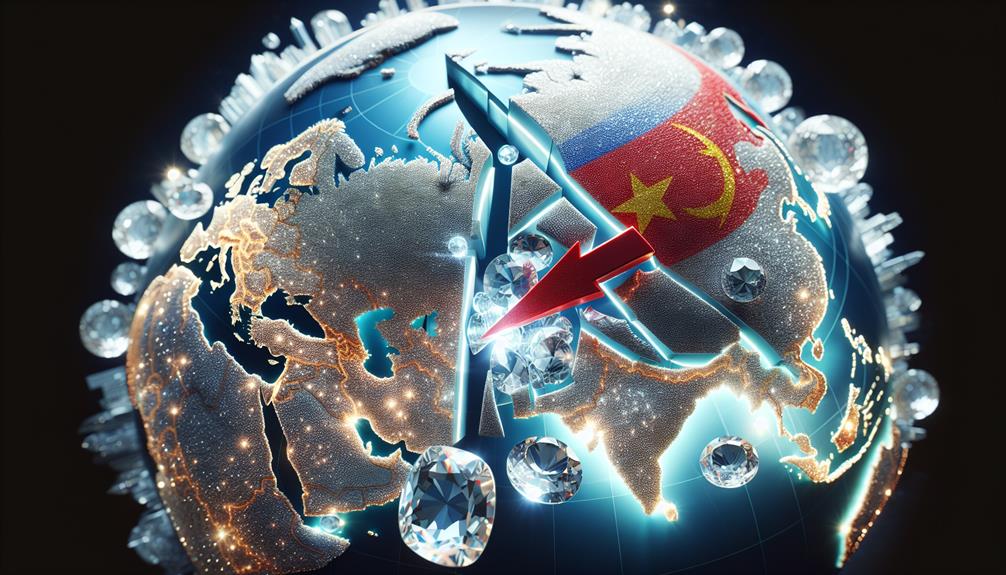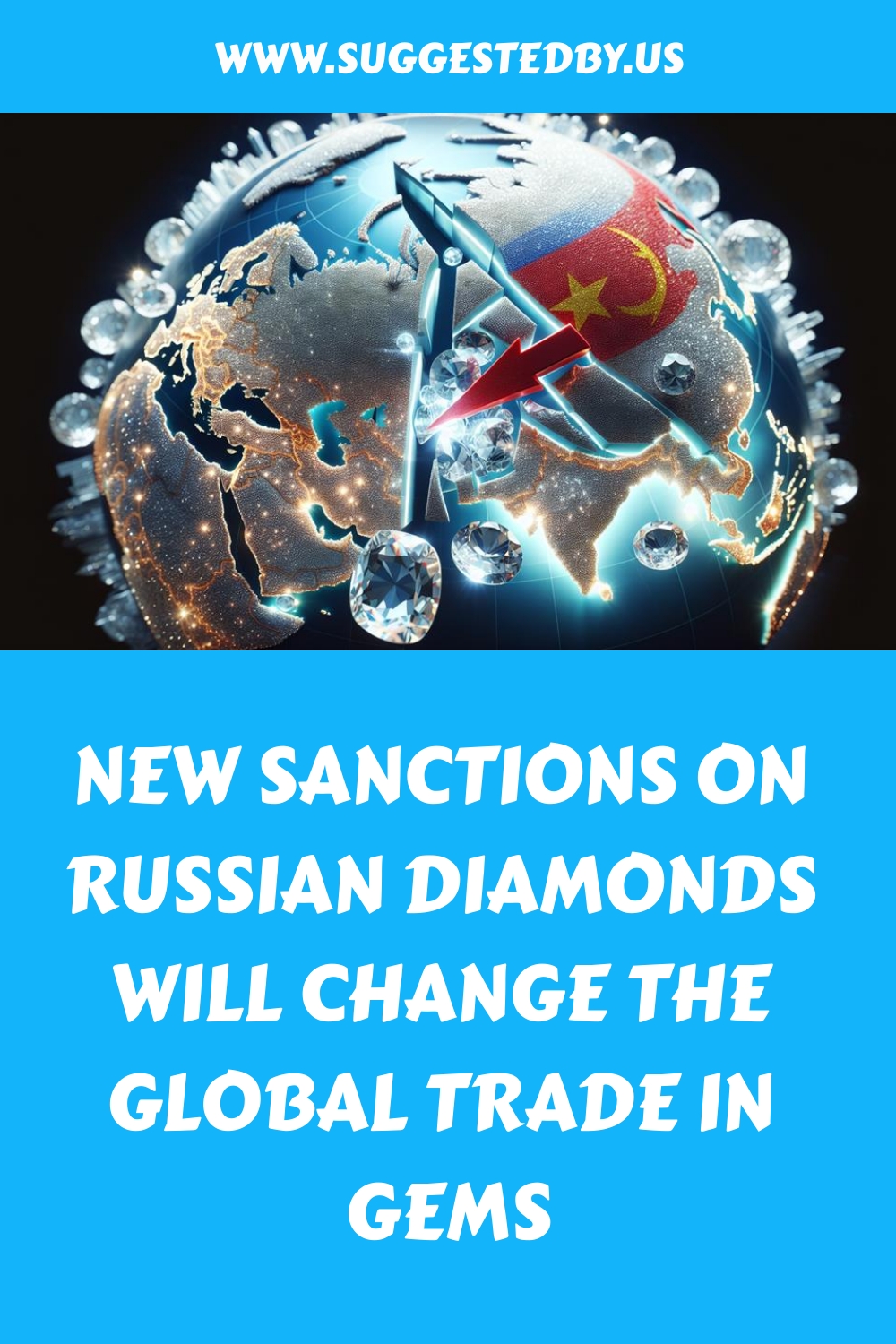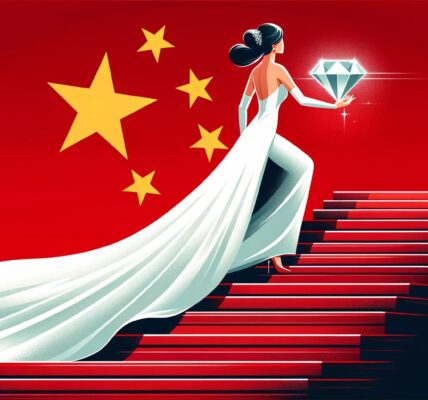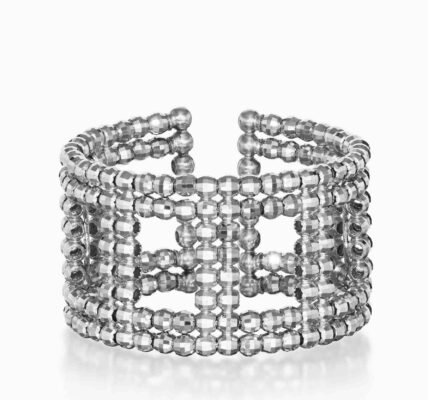The global gem trade is on the cusp of a significant transformation following the introduction of new sanctions targeting Russian diamonds. This move is poised to ripple through the industry with a force comparable to the clout of the Kimberley Process.
These sanctions, crafted as part of a comprehensive response to Russian foreign policy manoeuvres, aim to sever a vital revenue stream and present a complex challenge to the market’s status quo. The European Union’s decisive action has raised a multitude of questions regarding the future structure of the diamond trade.
Particularly, there are concerns about the resilience of existing supply chains and the ability of markets to adapt to this new economic landscape. As industry experts and government officials grapple with the unfolding situation, the global community watches intently to see how these sanctions on Russian diamonds will reshape the intricate web of gemstone commerce.
There are also concerns about the unforeseen consequences that may emerge as the embargo takes effect. This discourse seeks to unravel the strategic, economic, and ethical dimensions that will define the gem trade in a world where Russian diamonds are no longer a staple.
Article Contents
- 1 Key Takeaways About Sanctions on Russian Diamonds
- 2 Origins of the Diamond Sanctions
- 3 Impacts on Global Trade
- 4 EU’s Regulatory Measures
- 5 Challenges in Enforcement
- 6 Alternative Markets’ Response
- 7 Industry Players’ Adaptation
- 8 The Future of Gem Trading
- 9 Frequently Asked Questions
- 10 Conclusion
- 11 Further Reading About Sanctions on Russian Diamonds
Key Takeaways About Sanctions on Russian Diamonds
- Sanctions on Russian diamonds aim to disrupt the industry and recalibrate the global diamond market by severing revenue streams and improving transparency.
- Implementation of a robust tracing system is necessary to monitor supply chains and authenticate diamond origin, but it poses challenges and requires significant investment.
- The sanctions may lead to supply disruptions and reconfigured supply chains, resulting in potential price increases for consumers and reduced demand.
- Emerging technologies, such as blockchain, will play a pivotal role in ensuring compliance, traceability, and ethical sourcing in the diamond industry.
Origins of the Diamond Sanctions
The imposition of sanctions on Russian diamonds, primarily targeting the state-controlled giant Alrosa, emerged as a strategic move by the G7 countries and the European Union to constrict the financial resources fueling Russia’s global gem trade. This concerted effort reflects heightened scrutiny over the Russian diamond industry, which operates largely under the aegis of Alrosa—the behemoth state-controlled monopoly that is instrumental in the country’s economic framework. The sanctions are a calculated disruption, aiming to recalibrate the global diamond market by severing a critical revenue stream for the Russian economy.
Further, these punitive measures are designed to refine diamond trade dynamics, addressing the loophole of re-exporting Russian diamonds post-processing in third countries. However, the sanctions’ efficacy hinges on a robust tracing system capable of monitoring the intricate supply chains spanning multiple jurisdictions. The implementation of this system presents a formidable challenge, necessitating sophisticated oversight mechanisms that can authenticate a diamond’s origin and journey through the supply chain.
As Western miners and traders grapple with the additional costs of this tracing system, there is an anticipated knock-on effect on consumer prices. Nonetheless, the resultant transparency could set a precedent, potentially mitigating the illicit blood diamond trade and establishing new benchmarks for ethical sourcing within the industry.
Impacts on Global Trade
As global markets brace for the ripple effects of the sanctions on Russian diamonds, industry experts forecast a reconfiguration of supply chains and a potential surge in diamond prices. The sanctions targeting Alrosa could lead to supply disruptions, influencing the global availability of diamonds. This situation is likely to precipitate an impact on pricing, with increased costs for consumers as supply constricts.
The sanctions also have the potential for transparency improvements within the industry, as they require stricter adherence to provenance and traceability. This could indirectly support the blood diamond clampdown as the trade in conflict diamonds is further scrutinized. However, establishing more rigorous traceability systems to ensure compliance with sanctions will introduce new cost implications for Western miners and traders.
Below is a table summarizing the anticipated impacts on global trade:
| Impact Area | Expected Outcome |
|---|---|
| Supply Disruptions | Constricted diamond availability, reconfigured supply chains |
| Impact on Pricing | Increased prices due to limited supply and higher operating costs |
| Transparency & Ethics | Strengthened measures against blood diamonds, improved industry transparency |
The global trade in gems is poised for transformation as these sanctions take effect, with implications reverberating across the entire value chain, from mining to retail.
EU’s Regulatory Measures
The European Union’s latest regulatory measures impose stringent sanctions on Russian diamonds, aiming to disrupt the state-controlled monopoly, Alrosa, and its substantial annual revenue stream. By targeting the $4.5 billion in revenue generated principally by Alrosa, the EU’s regulatory measures are designed to close existing loopholes that previously allowed Russian diamonds to enter the market after being cut and polished abroad. This strategic move is anticipated to significantly impact supply chains, creating trade disruption and potentially leading to global diamond market consequences.
The technicalities of these regulatory measures require a high level of scrutiny to ensure their effectiveness. Ensuring transparency improvements in the notoriously opaque diamond supply chains presents a formidable challenge, necessitating a robust and rigorous tracking system. To get around the restrictions built into existing frameworks like the Kimberley Process, such a system would require impartial third-party oversight.
While the sanctions may not entirely cripple Russia’s diamond industry, they represent a strategic step that could indirectly benefit the West. By enhancing the mechanisms to clamp down on blood diamonds, these measures could foster a more ethical and transparent global diamond trade. Therefore, the EU’s regulatory actions not only target a critical Russian revenue source but also aim to catalyze broader industry reforms.
Challenges in Enforcement
Enforcing the newly imposed sanctions on Russian diamonds poses a complex challenge, given the intricacies of the global supply chain and the potential for obfuscation of gem origins. The cost of enforcement will be significant as stakeholders throughout the supply chain, from miners to retailers, will need to invest in advanced tracing technology to ensure compliance.
The adoption of microscopic serial numbers, 3D scanning, and other tracking technologies is critical for tracking the provenance of gemstones. However, technical limitations and the lack of widespread implementation pose substantial barriers. Additionally, trade disruptions are anticipated, as legitimate diamond transactions might be inadvertently affected by stringent verification processes.
Third-party oversight is essential for maintaining the integrity of the sanctions. This will require the establishment of impartial entities capable of auditing and certifying the origin of diamonds, which adds an additional layer of complexity and expense. The table below outlines the primary considerations associated with sanction enforcement:
| Consideration | Challenge | Impact |
|---|---|---|
| Cost of Enforcement | High investment in tracing and compliance systems | Increased operating costs |
| Tracing Technology | Lack of universal adoption and technical limitations | Difficulty in verifying origins |
| Trade Disruptions | Tighter controls affecting legitimate trade | Potential market instability |
| Potentially reduced demand | Need for unbiased certification and monitoring | Additional resources required |
| Consumer Impact | Possible price increases due to higher operational costs | Potential reduced demand |
These challenges underscore the complexity of imposing and enforcing sanctions in a globalized and interconnected market. It remains to be seen how these factors will influence the efficacy of the new sanctions regime and its repercussions on consumers.
Alternative Markets’ Response
The imposition of sanctions on Russian diamonds is prompting alternative markets, particularly in China and India, to reassess their role in the global gem trade and explore opportunities for expansion. With Alrosa’s output constrained, these markets are evaluating the supply chain disruptions and their implications for the competition for the diamond trade.
The diamond sanctions may catalyze an uptick in Chinese demand as buyers seek new sources to fulfil their requirements. The Chinese market, already a significant player, could leverage its position to negotiate better terms and pricing dynamics, ensuring the flow of diamonds remains uninterrupted. This recalibration could also bolster the domestic industry, incentivizing local production and processing capabilities.
The Indian market, renowned for its diamond cutting and polishing expertise, will likely experience challenges and opportunities. The scarcity of Russian gems could initially strain the industry, yet it also presents a chance to capture market share and solidify India’s stature in the global diamond hierarchy. However, pricing dynamics will be critical as competition intensifies and markets adjust to the new geopolitical landscape.
Ultimately, the realignment of the diamond trade in the wake of Russian sanctions is a complex interplay of demand, supply, and strategic market positioning, with China and India poised to potentially benefit from the shifts.
Industry Players’ Adaptation
As global markets like China and India evaluate the ramifications of Russian diamond sanctions on their industries, key industry players are actively pursuing innovative solutions to adapt to the new regulatory environment and maintain the integrity of the gem trade.
Consolidated lobbying efforts to establish a reliable and verifiable tracing system design that is capable of ensuring that diamonds on the market are not of Russian origin highlight these adaptations.
To this end, blockchain technology implementation is being explored as a reliable means to provide a tamper-proof ledger for diamond traceability. The immutable nature of blockchain makes it particularly well-suited to record and verify the provenance of gemstones, thereby contributing to the transparency that is now more critical than ever.
Additionally, there is a push for industry-wide collaboration to foster a traceability solution that has universal support across all diamond centres. This coordinated approach is intended to minimize loopholes that could allow Russian diamonds to enter the market via illicit channels.
Among the solutions being advanced is the iTraceiT digital solution, a platform that offers a comprehensive digital trail from mine to market. This system is instrumental in easing the potential supply chain disruptions resulting from sanctions while providing exporters with a reliable method to substantiate the non-Russian origin of their diamonds.
The Future of Gem Trading
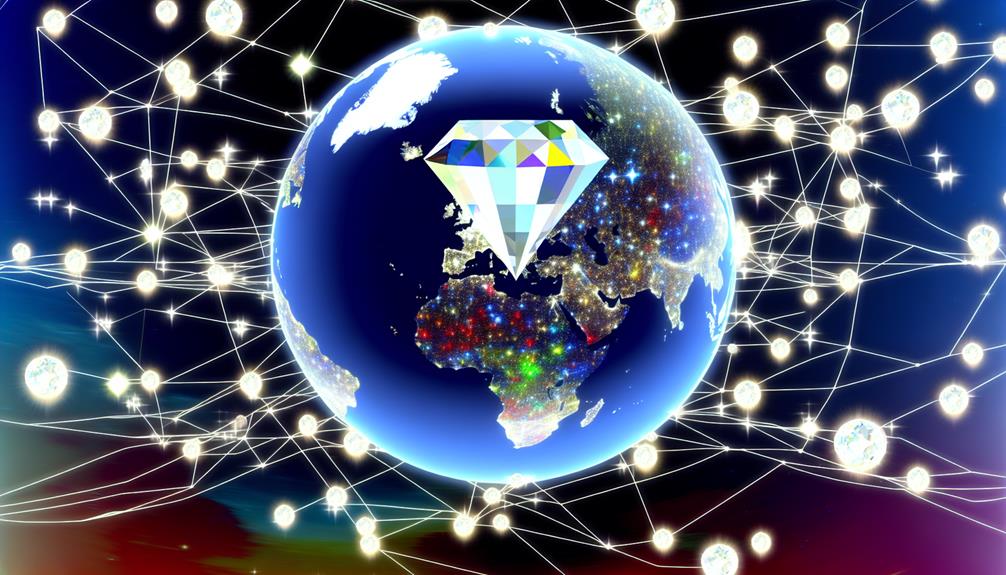
Anticipated sanctions targeting Russian gems are poised to reshape the contours of the global diamond trade, with far-reaching implications for supply chains and market pricing structures. The landscape of gem trading is on the brink of a significant transformation as industry stakeholders grapple with the introduction of these sanctions.
Emerging technologies will play a pivotal role in tracing the origin of diamonds, ensuring compliance with sanctions, and maintaining ethical standards.
Sustainable sourcing will take centre stage as traders and consumers demand greater transparency and responsibility in mining and selling diamonds.
Consumer preferences are likely to shift towards ethically sourced gems, influencing market offerings and potentially driving up prices for verified conflict-free diamonds.
Market competitiveness may intensify, with companies that adapt to the new ethical paradigm gaining a competitive edge over those that fail to align with international standards and consumer expectations.
In this evolving context, market participants will need to navigate a complex web of ethical considerations and adapt to the changing landscape. Those who can successfully leverage emerging technologies to provide sustainable sourcing and meet consumer preferences will likely emerge as leaders in a market increasingly concerned with ethical implications and competitiveness.
Frequently Asked Questions
What Will Sanctions on Russian Diamonds Mean for Jewellery?
Sanctions targeting Russian diamonds are poised to perturb the industry’s supply chain, potentially inflating consumer prices within the luxury market.
The industry impact may incentivize increased ethical sourcing as jewellers seek alternatives to Russian gems.
Analysts anticipate that these measures will compel market players to reassess procurement strategies, ensuring compliance while maintaining product availability for discerning consumers attuned to the provenance of their luxury purchases.
Does Russia Control the Diamond Market?
Russia’s influence on the diamond market is significant due to Alrosa’s near-diamond monopoly, which impacts market dynamics. However, Russia does not have absolute control, as trade implications from sanctions could shift demand to alternative sources.
Ethical considerations also drive the market, as consumers increasingly prefer diamonds with transparent sourcing.
The industry’s landscape is complex, with various factors influencing supply, demand, and pricing.
Does Russia Have Good Diamonds?
Russia possesses diamonds renowned for their high quality, derived from the country’s geological abundance and advanced mining technologies. The nation’s cutting expertise further enhances the diamond qualities, although ethical sourcing remains a topic of international scrutiny.
While Russia’s diamond industry is a significant global player, the question of ethical sourcing and sanctions can affect perceptions and market dynamics in the realm of precious gems.
Are There a Lot of Diamonds in the World?
Diamond scarcity raises questions about the abundance of these precious stones. While the Earth has yielded vast quantities, geological rarity ensures a finite supply, leading to market fluctuations.
Ethical sourcing further restricts availability, influencing investment value.
Through the analytical lens, it’s clear that diamonds are not ubiquitous. However, their existence is substantial enough to sustain a complex global market, albeit under constant reevaluation due to various socio-economic and political factors.
Conclusion
In conclusion, sanctions on Russian diamonds have sown the seeds of transformation within the global gem market.
As the European Union’s regulatory net tightens, the industry faces a crucible moment; stakeholders must navigate the labyrinthine challenges of enforcement and adapt to shifting trade winds.
The future of gem trading now hinges on the collective ability to foster resilient, alternative market structures and ensure the integrity of supply chains amidst geopolitical upheavals.
Further Reading About Sanctions on Russian Diamonds
3: https://www.businessoffashion.com/news/luxury/eu-russian-diamond-ban-goes-introduced/
4: https://time.com/6343644/russian-diamonds-ban-g7-ukraine-war/
